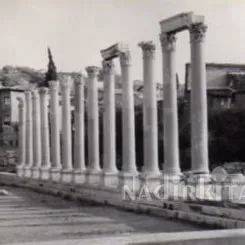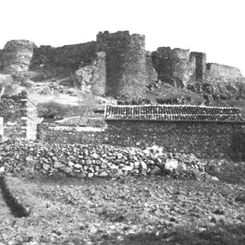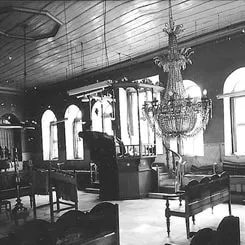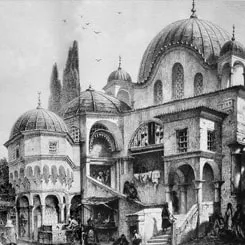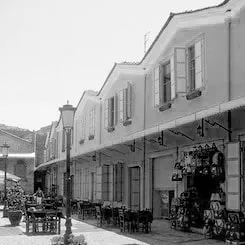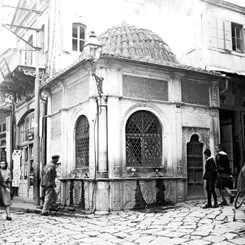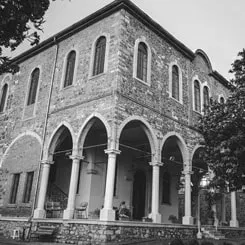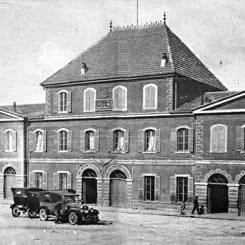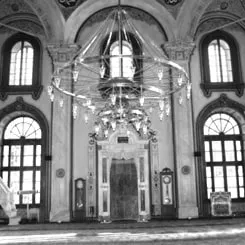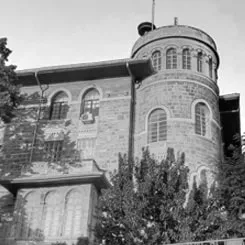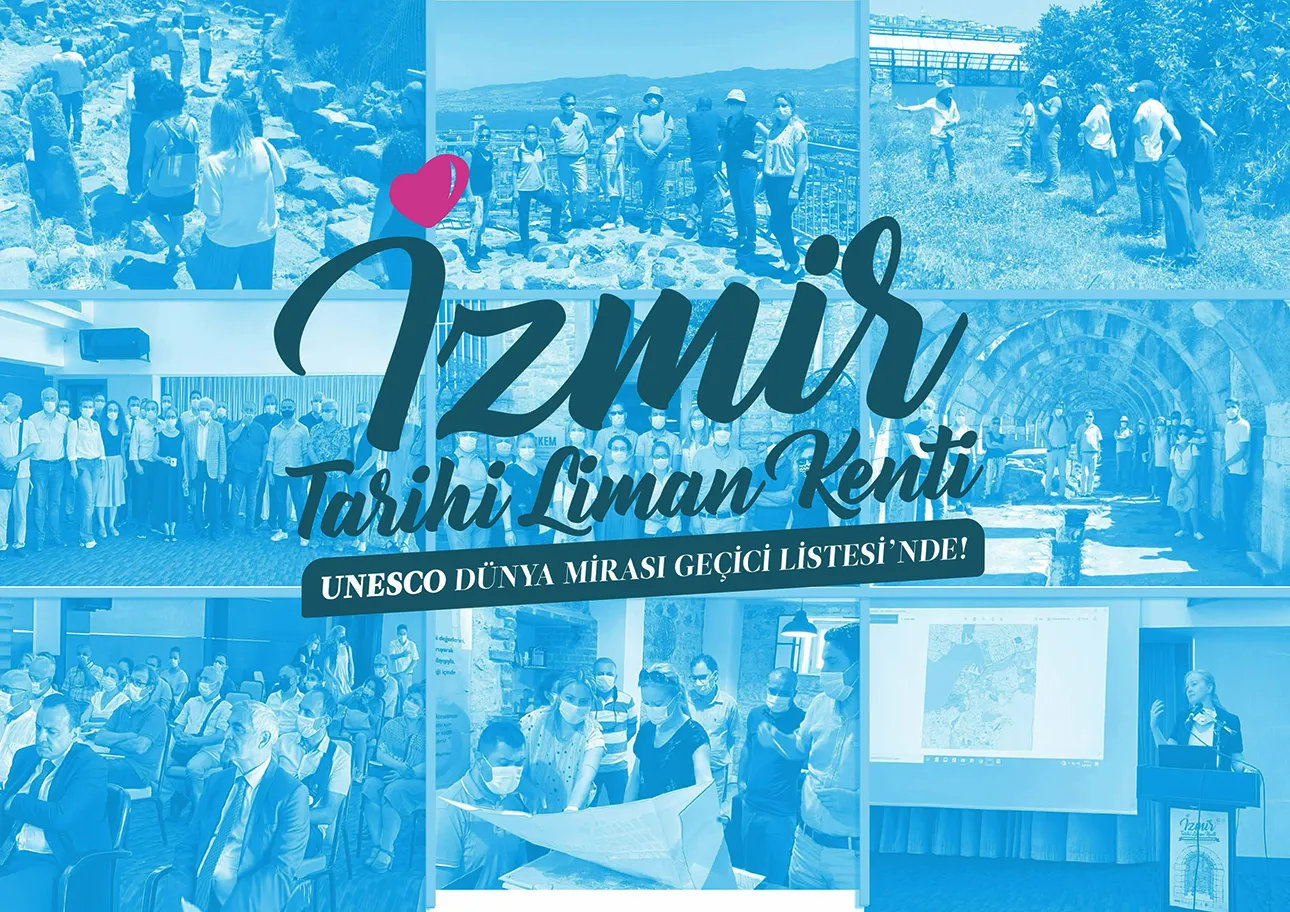
A protocol has been signed on 05.05.2020 between the General Directorate of Cultural Heritage and Museums of the Ministry of Culture and Tourism and TARKEM regarding the preparation of the Site Management Plan and UNESCO World Heritage List nomination file of The Historical Port City of Izmir, which was added to the UNESCO World Heritage Tentative List on 14 April 2020.
TARKEM is the institution authorized to prepare the Site Management Plan of The Historical Port City of Izmir and the nomination file for the UNESCO World Heritage List in accordance with this protocol.
UNESCO World Heritage List Nomination Process
The UNESCO World Heritage nomination process of The Historical Port City of Izmir has been continuing since the early 2000s. At the end of the process, which accelerated in 2020 with the great support of the Ministry of Culture and Tourism, the area was included in the UNESCO World Heritage Tentative List. In order for The Historical Port City of Izmir to be included in the UNESCO World Heritage List, public institutions and organizations, professional chambers, non-governmental organizations, business people, local actors and regional actors, especially the Ministry of Culture and Tourism, Izmir Governorship and Izmir Metropolitan Municipality, have been working together. Work on the site management plan and the UNESCO World Heritage List nomination file have been carried out intensively since 2021.
14 April
2020
The Historical Port City of Izmir was added to the UNESCO World Heritage Tentative List
5 May
2020
TARKEM was authorized to prepare the Site Management Plan and Nomination File of The Historical Port City of Izmir
1 July
2020
On-site inspections were carried out by experts from the General Directorate of Cultural Heritage and Museums.
7 October
2020
The boundaries and connection points of The Historical Port City of Izmir Management Area have been determined.
October 2020 -
March 2021
Members of the Advisory Board and the Coordination and Supervision Board were determined.
The Historical Port City of Izmir Site Management Office was established.
Mr. Abdülaziz Ediz was appointed as the “The Historical Port City of Izmir” Site Manager.
December
2021
SWOT Workshop
March
2022
Site Management Plan has been completed.
December
2022
Establishing management and communication structures
Management plan
Nomination file studies
December
2023
Submission of the UNESCO World Heritage List nomination file to the Republic of Turkey Ministry of Culture and Tourism
The Historical Port City of Izmir, with its impressive history of 8500 years, extending from the prehistoric period to the present city center, includes the historical city center in Konak district, which is its administrative area, and the Yeşilova and Yassıtepe Mounds in Bornova district, which are the connection points, and the archaeological sites of Old Smyrna in Bayraklı district. The Historical Port City of Izmir Site Management Plan, one of the important steps towards becoming a World Heritage Site, was unanimously approved by the Coordination and Supervision Board on June 29, 2022. It was officially distributed and published on the website by the Ministry of Culture and Tourism and has started to be implemented. The governance model put forward during the preparation process of the Site Management Plan was also included in the text of the Izmir Declaration, which was cited as one of the best examples in the world at the UNESCO ICLAFI Meeting held in 2022.
The Nomination File, which was prepared with the contributions of academics who have been working on the Izmir Historical City Center and its archaeological sites for many years, experts in their fields, experts working within the Area Directorate and experts from the Ministry of Culture and Tourism, has been developed and revised. In this context, field studies were carried out and the originality, integrity and preservation of the living city center were evaluated. Studies in the field were carried out with ICOMOS member experts who provide consultancy services at an international level. After the comprehensive studies carried out, the UNESCO World Heritage Nomination File was completed on 31 December 2022 and delivered to the Ministry of Culture and Tourism.
All stakeholders from Izmir, especially the Ministry of Culture and Tourism, Izmir Governorship and Izmir Metropolitan Municipality, actively participated in all the works carried out towards becoming a World Heritage Site. It is expected that The Historical Port City of Izmir file will be sent to the UNESCO World Heritage Committee after a decision is made by the Ministry of Culture and Tourism in August 2023 and sent to UNESCO.
A History of 2500 Years
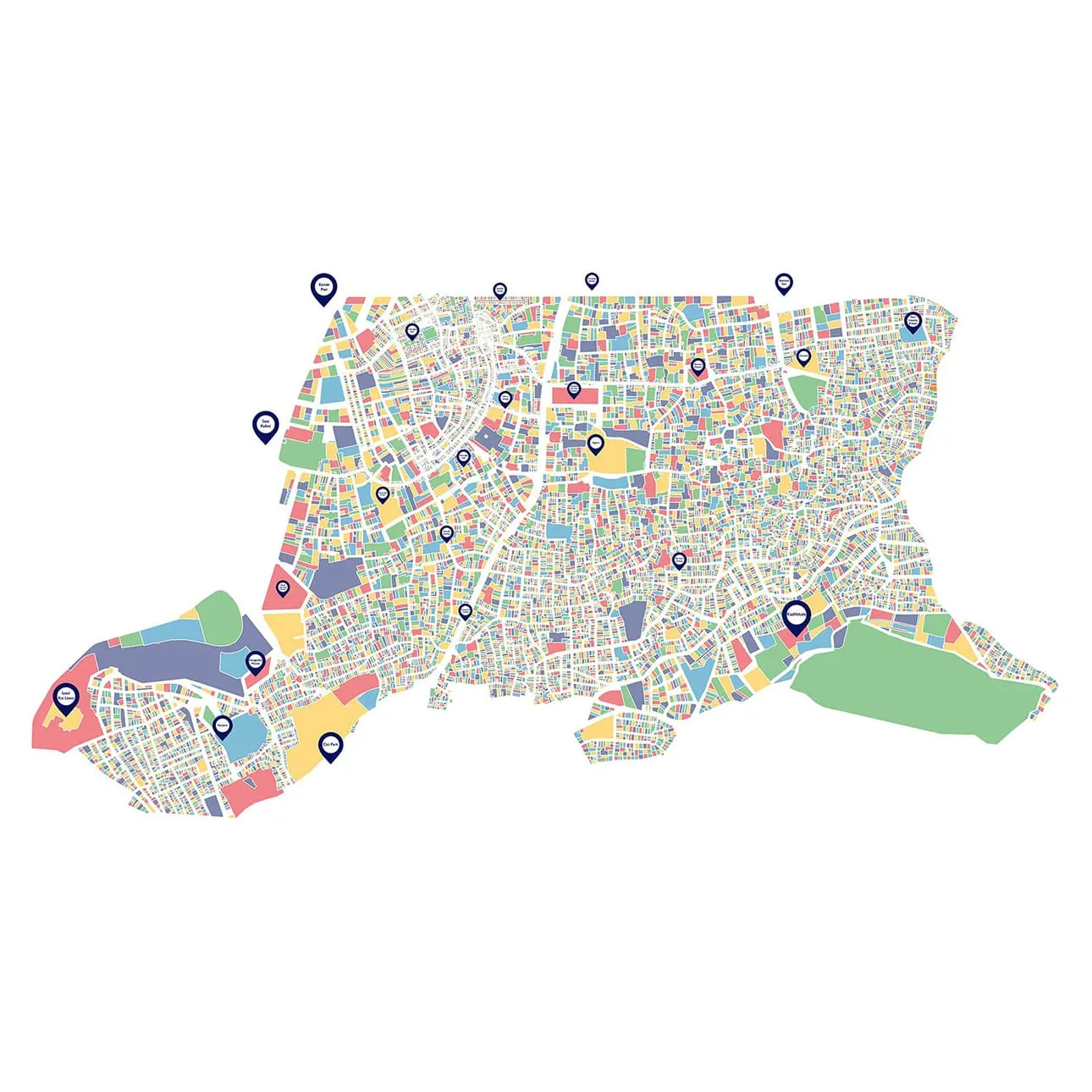
Izmir has a unique geography with its rich historical, cultural heritage and natural beauties. Izmir, whose chronology goes back 8,500 years, has hosted different civilizations since the day it was founded, as a result of its “port city” identity that emerged thanks to its geographical and topographic advantages, and as a result of the blending of all these layers, a unique cultural mosaic has developed on earth.
“New Smyrna” is the last link of the long cultural journey of the city of Izmir, whose settlement date dates back to 7000 BC, starting from Yeşilova Mound and continuing with “Bayraklı Smyrna” in the Archaic period. It was built on the axis of Kadifekale and Kemeraltı right after the Eastern Expedition of Alexander the Great. The city has grown and developed around this center for approximately 2300 years. The region is a multi-layered open air area with ruins such as Kadifekale, Agora, Ancient Theater and Ancient Stadium inherited from the Hellenistic and Roman periods, Kemeraltı Bazaar, which developed during the Ottoman period as a result of the filling of the ancient port, and neighborhoods containing religious, public and civil architectural examples from different cultures.
Different Ages, Religions, Cultures and Countless Architectural Buildings Keeping All These Alive
The intersection process of different ethnic groups; starts in the 17th century, when commercial identity reached its highest level, and reaches its peak in the 19th century. As a result of the differentiated commercial and political structure in this process, Izmir received significant migration on a world scale, developed a multilingual, multicultural, heterogeneous urban identity and became one of the most important commercial centers of the Mediterranean region.
Modern Izmir, which developed in line with the goals of the Republican regime, instead of the historical texture that was largely destroyed in the fire of 1922, continued to develop by adding the fair organization mission to its commercial identity as a result of the 1st Economic Congress and subsequently with the “Izmir International Fair” built in the area destroyed by the fire in 1936.
By the 1950s, it entered a process of “urbanization” with a severe and permanent socio-economic change. It has rapidly become concrete, and its historical texture and identity have begun to be rapidly destroyed.
Over 2,000 Registered Buildings
Historical Kemeraltı and its surroundings, which are still defined as the center of the city and actively used today, contain approximately over 2000 registered monumental and civil architectural structures, street and square texture, inns, workshops, hotels, baths, mosques, churches, synagogues, schools, fountains, etc. It is an area where a rich and multicolored cultural mosaic is formed and developed as a result of the interaction of different civilizations with its commercial, social, administrative, civil and religious architectural structures. Kemeraltı Bazaar, which developed between the 15th and 18th centuries when the ancient inner harbor was filled, continues to exist as a trade center today.
KÜLTÜREL YAPILAR
DİNİ YAPILAR
With the establishment of the Historical Environment and Cultural Heritage Directorate within the Izmir Metropolitan Municipality in 2002, many important projects have been implemented to preserve the historical and cultural heritage within the boundaries of its responsibility, to develop and disseminate conservation awareness and culture.
The area, which is a historical city center with an area of approximately 252 hectares, was declared as “Izmir Konak Kemeraltı and Surroundings Renewal Area” in 2007, with the initiatives of our Municipality and the decision of the Council of Ministers in line with the law no. 5366. Apart from the renewal area, new investments are being made in the historical values of the city with regional and individual scale conservation works every day.
The goal of “creating an Izmir in peace with its history” is the common denominator of all efforts developed by the Izmir Metropolitan Municipality to bring to light the cultural richness of the city, to carry the heritage of the past to the future and to ensure its preservation and sustainability.
Many projects have been completed, continued and started in order to ensure that the city of Izmir lives with its historical heritage and characteristics, is promoted and proudly shared with the world; and it is shaped on an axis that embraces all civilizations and with a socialist local government approach.
The Historical Site is Revitalized with the Izmir History Project…
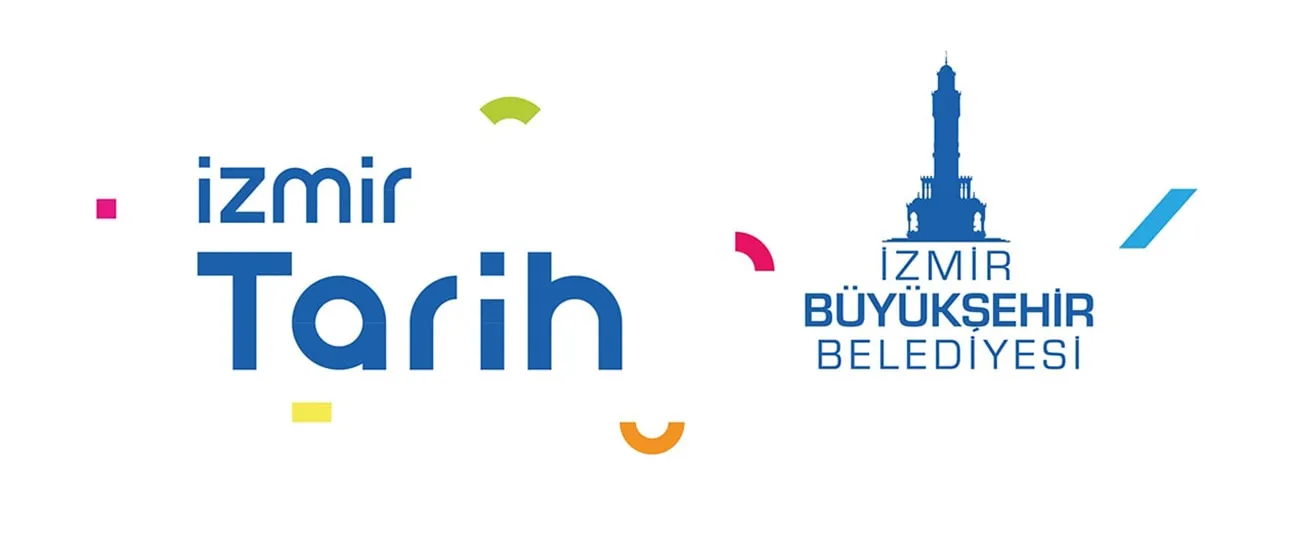
As it is known, the region within the borders of Konak of our city includes archaeological sites and historical building stock, and is an area where intense life continues. In this region; during the growth process of the city, the central business area shifted to the north and the center became vacant, the growth dynamics of the area was lost, there was a shrinkage in terms of population and employment, slums formed as a result of migration, the upper income groups living in the region moved to modern residences in the developing circles of the city, functional changes in the vacant areas, The decrease in housing use and the destruction of the historical texture due to lack of maintenance have caused the collapse areas to increase day by day.
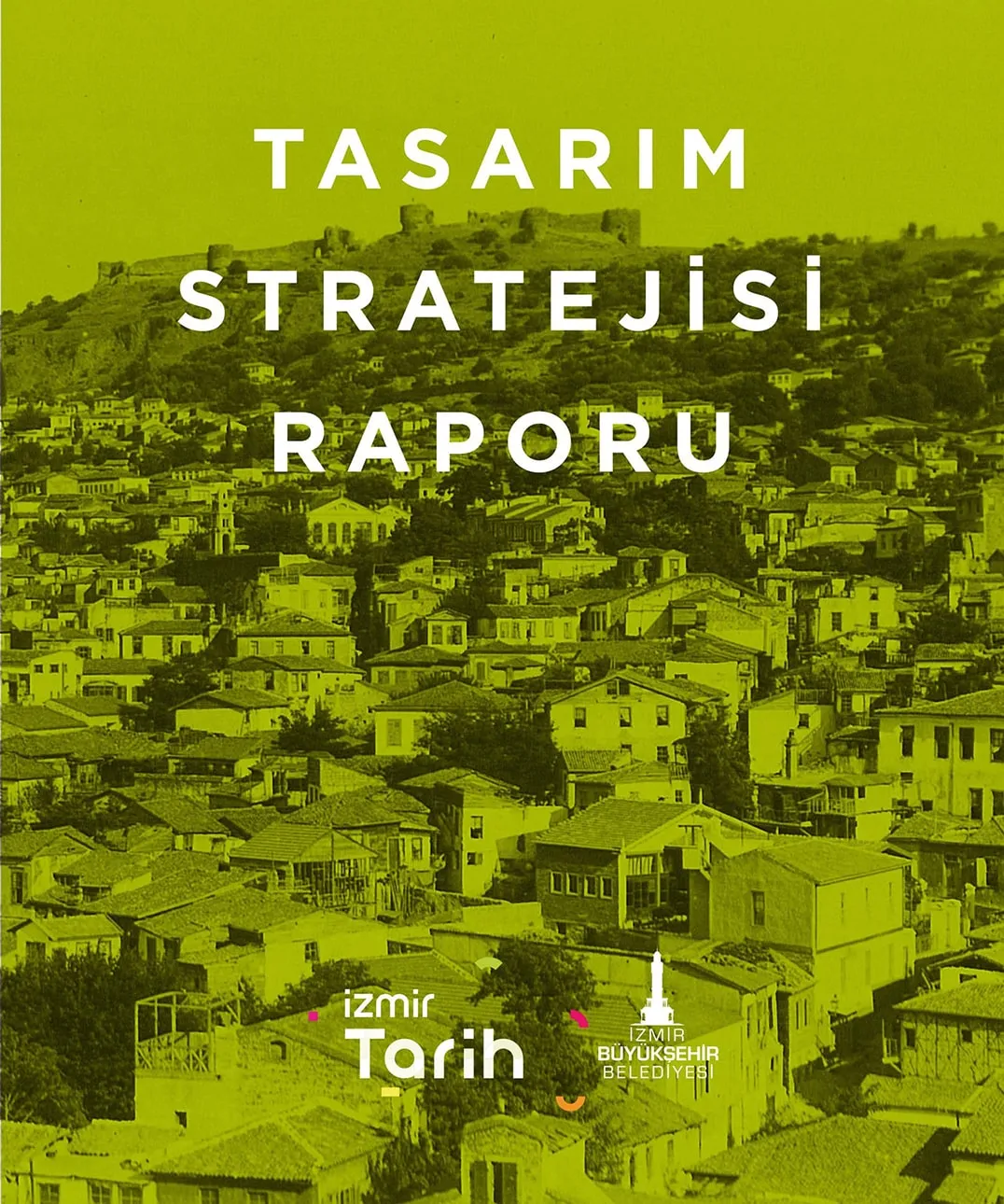
In order to rehabilitate this collapsed area and ensure a holistic organization, conservation efforts have gained great momentum after the region was declared a renewal area. In this context, Izmir Metropolitan Municipality continues to bring life to the area with both expropriation works in archaeological areas and conservation-oriented projects carried out on a single building scale. In addition to all these works, in order to holistically revitalize and rehabilitate the region, which has the characteristics of the historical city center of Izmir, hosts cultural layers of different civilizations from the 4th century BC to the present day, and is a 3rd degree archaeological site and urban site, in an area of 252 hectares, “Izmir History Project” was started.
Suggestions regarding the project area in the Izmir History Project; is evaluated by the participatory framework developed in collaboration with local governments, other relevant public institutions, chambers, professional associations, non-governmental organizations, universities, opinion leaders and regional users. As a result of the participatory process, the main goal in the Izmir History Project Design Strategy Report was determined. The first goal is to strengthen the relationship of the people of Izmir with history. This will be done by improving the memories of the people of Izmir associated with their city. The resource to be used for this purpose is the archaeological cultural assets and historical building stock in the project area. The second aim is to prevent and reverse the formation of collapse areas that emerged in the project area as Izmir transitioned from the monocentric city of the industrial society to the polycentric city region of the information society. The fact that the project area contains a large amount of cultural assets necessitates the development of revitalization and conservation objectives together. It should be ensured that the revitalization target is achieved in line with sustainable approaches in terms of archaeological heritage, historical building stock, cultural diversity and social structure.
There's a History in This
One of the strategic orientations determined within the scope of the above-mentioned goals is to initiate a filter-up process in some parts of the project area in order to revitalize the area. Replacing prestigious activities that have left the region with other prestigious activities will increase the visiting potential of the region. During the participatory process, a broad consensus was reached that such a strategic activity could be tourism. It is important to develop tourism in this area not only by observing historical values, but also by making history a part of the life experience here. For this purpose, it is aimed to carefully preserve this quality of the streets, where life becomes a “place” where life is “experienced”, to increase the number of streets with this quality, and to transform large-scale buildings such as inns and synagogues within the project area into “experience” with innovative approaches, design and appropriate organization techniques. It has been suggested that it should be given a creative quality.
Attracting youth to this area due to higher education activities and their accommodation activities has been determined as another strategic orientation. In this regard, suggestions have been developed such as increasing the diversity of activities that young people can use to spend their free time, creating cultural areas integrated with production and sales activities for young people, and developing projects to increase the skills and potential of unemployed or working young people in the project area who are outside the education system.
The fourth strategic choice agreed upon during the participatory process was the rehabilitation and revitalization of housing functions in the region, which largely includes residential areas. For residential use, it is proposed to achieve a balanced social structure by ensuring that people from all layers of society can live in this area.
The Historical Site Reaches Its True Identity with 19 Sub-Regions…
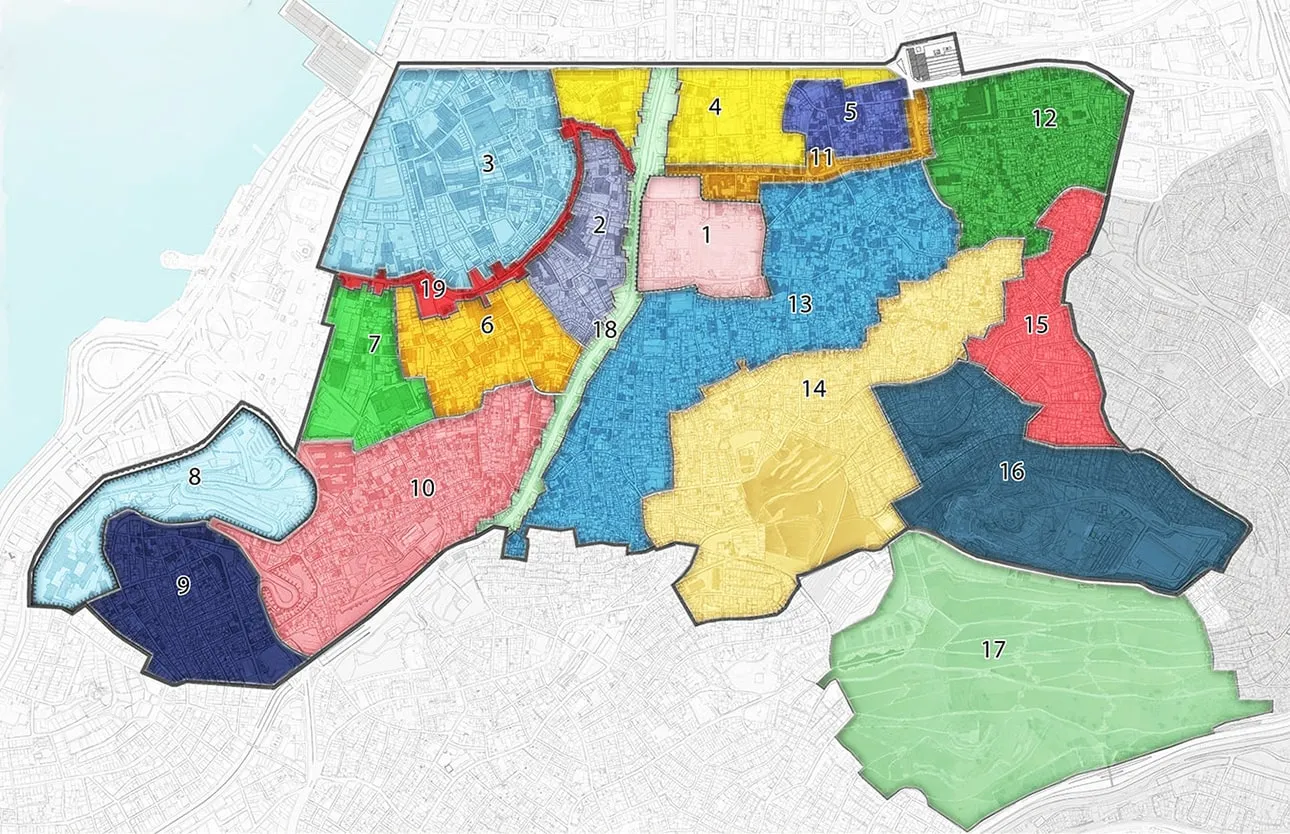
Today, thousands of tradesmen, hundreds of craftsmen, hundreds of unique tastes, with all their values, are waiting for their new guests with the slogan “We are waiting for you again” in thousands of registered cultural buildings in the Historical Area, visited by hundreds of thousands of citizens every day…


